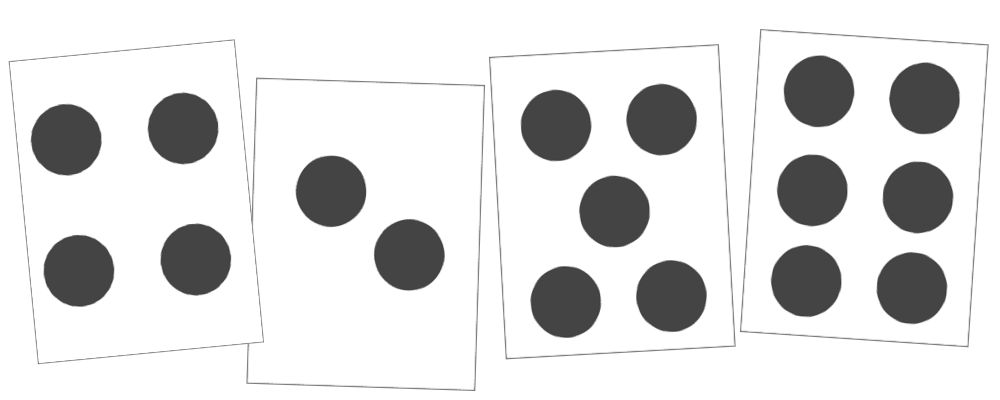Subitizing – What is this word? As an upper elementary teacher, this was a word that was not in my teaching repertoire. In grades 3, 4, and 5, we were more focused on multiplication, division, fractions, etc. However, after looking into this, I can see how this “subitizing” concept could have helped some of my students if taught early on. Let’s take a look at what subitizing is and the benefits it has with young learners.
Subitizing is essentially the ability to recognize how many objects are in a group without counting. This is a fundamental skill when developing number sense skills. As adults, we have some innate subitizing skills. If you put four tomatoes on a cutting board, we know that there are four without counting them. This is because, as adults, we have a “stable mental image” of what the number 4 looks like. We also know what four looks like in different arrangements. This could be four tomatoes in a line, four in a square, four in a random assortment, etc. Since we have the ability to subitize, we know there are four without counting 1-2-3-4.

Now when looking at subitizing cards, such as the cards above, you probably could tell me how many dots are on each card. This is because these regular patterns appear on dice and we have learned to recognize the dot patterns. This happens around age 4, when children can start to understand how many there are in a group without counting (but typically up to 5). When there are more than 5, children and adults have to use different clustering strategies to determine a number without counting.
Now when we got back to the tomato example, let’s say there are six tomatoes. As an adult, I may visually see that there are four tomatoes and two tomatoes for a total of six. We automatically see these patterns and add them together in our heads. This may be a skill that we have never been formally taught, but rather picked up on the concept with age and practice.
Using subitizing cards can be a great way to practice this skill with your young learner. It is great to first start with numbers up to 5. Once your child has mastered these, you can move on to numbers 6-10. There may also be different ways to arrive at a number. For example, if your child is looking at a dot card with 7 dots, he/she may see 2 and 5, 3 and 4, or 3, 3, and 1.
Subitizing is important because it helps children relate numbers to actual items or groups of items. It helps them understand the part-part-whole relationship which accelerates the understanding of addition and subtraction.
